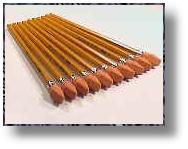Fundamentals of Firearms ID
Studies
have shown that no two firearms, even those of the same make
and model, will produce the same unique marks on fired
bullets and cartridge cases. Manufacturing processes,
use, and abuse leave surface characteristics within the
firearm that cannot be exactly reproduced in other firearms.
Firearms
do not normally change much over time. This allows for firearms
recovered months or even years after a shooting to be identified as
having fired a specific bullet or cartridge case. Tests have been conducted
that found that
even after firing several hundred rounds through a firearm the last
bullet fired could still be identified to the first.
It
should be noted that not all firearms leave consistent reproducible
marks. But overall it has been my experience that
around eighty percent of the firearms that I examine produce what is sometimes called
a "mechanical fingerprint" on the bullets and cartridge
cases that pass through them.
All
cases that involve firearms identification start with preliminary
examinations of the evidence for similar class characteristics.
Class
characteristics can be defined as:
Intentional
or design characteristics that would be common to a particular group or
family of items.
 A very basic example would be that several no. 2 pencils in a box are
yellow and have pink erasers. The color and eraser type is a common class characteristic
to all of the pencils. A very basic example would be that several no. 2 pencils in a box are
yellow and have pink erasers. The color and eraser type is a common class characteristic
to all of the pencils.
When it comes to firearms and ammunition it is not quite so simple.
The class characteristics of
firearms that relate to the bullets fired from them includes the caliber
of the
firearm and the rifling pattern contained in the barrel
of the firearm.
Cartridges and Cartridge cases on the other hand are examined for
class similarities in what are called breech marks, firing
pin impressions, extractor marks, ejector
marks and others.
If dissimilarities
in class characteristics are found or if a general lack of good class
characteristics are present no further comparisons may be necessary.
When
similar class characteristics are identified the examinations progress
to a final stage where an attempt is made to find a "match"
in what are called individual characteristics.
The AFTE
Glossary defines Individual
characteristics as:
marks
produced by the random imperfections or irregularities of
tool surfaces. These random imperfections or irregularities
are produced incidental to manufacture and/or caused by use,
corrosion, or damage. They are unique to that tool and
distinguish it from all other tools.
The transfer of individual
characteristics from a firearm to the ammunition components
passing through it is what makes firearms identification
possible.
Click the Next button below
learn more about bullet identification.
|